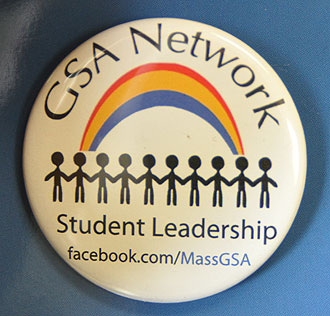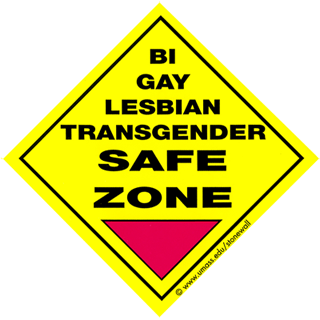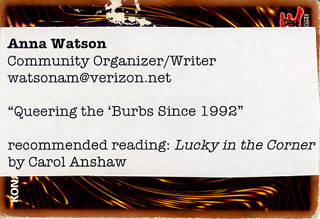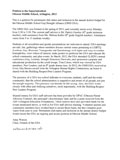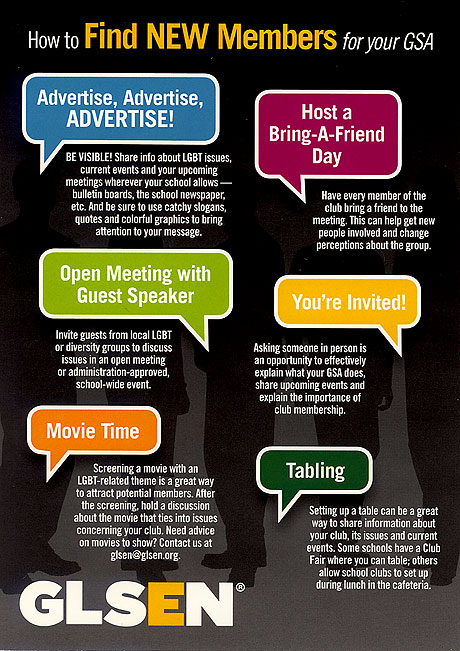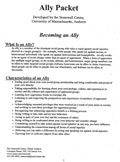 |
 |
Pro-family activism that makes a difference! | ||||
"LGBT" Teachers Conference in Boston - Part IIThe latest push: "Gay" clubs for kids in middle schools. Here's how they get them in -- and what comes with them.POSTED: May 23, 2014The homosexual-transgender movement is working hard to indoctrinate schoolchildren as young as possible. By far, the most effective way is to get them into school-based "gay" clubs that are run by activist, often radical, adults, but though otherwise unsupervised. They have been working at this for several years (see our 2008 report) but are now ramping up their efforts considerably. We reported last week, on this year's annual GLSEN Conference in Boston which brought together LGBT teachers, activists, and supportive administrators to discuss their latest tactics for the schools. A prominent part covered strategies for setting up "gay-straight alliance" (GSA) clubs in as many middle schools as possible, given that most high schools now have them.
At that conference, there were kids as young as 11 and 12, and that younger age group was clearly the focus of much of the conference. Middle school student gives speech at LGBT conference opening sessionMiddle school are such an important target that GLSEN recruited an activist "LGBT" middle school student to address the conference's opening session. She said she's bisexual (in middle school!) and that her sister is lesbian. The girl spoke about how she helped organize the "Day of Silence" in her middle school. She said that one teacher was reluctant to put up the posters because of parent conferences that evening, saying that parents might not be comfortable seeing it. The girl labeled the teacher "ignorant" and said the teacher is "no longer working at the school" (which brought a cheer). She added that "kids are figuring out who they are younger than ever" (i.e., being persuaded to self-identify as L, G, B, or T) and that "we need to create a safe environment for them in the lower grades." This was a mantra that was repeated again and again in the conference. ("Safe environment" is the Orwellian term for a school that aggressively enforces pro-"LGBT" sexual ideology and suppresses all dissent.) Given that middle school students would not have these ideas and talking points on their own, this shows how well the adult activists instruct them.
The workshop: "Starting a Middle School GSA"The LGBT movement is getting serious about the lower grades. One of the prominent workshops at the GLSEN conference was "Starting a Middle School GSA." At first glance, a "gay" club for middle school students would seem beyond something even most liberals would buy into. But that's simply another challenge for the movement to overcome. After all, it wasn't too long ago that ANY "gay" club at all, even in high school, was beyond the pale. Here is how the conference program listed it:
This workshop gave step-by-step instructions by a seasoned activist. The presenter, Anna Watson, started out by saying that she believes that "coming out" is a "life-saving adventure" and that kids are coming out at younger and younger ages. Thus, they need support groups to help them do that. She told the workshop attendees that she has been an "LGBTQ" activist and organizer for several years. In particular, she is interested in starting GSA-type groups for young people.
She said that in city schools there are lots of GSAs, but it's different in the suburbs. This is likely because the parents are more attentive to what's happening in the schools. She used the term "suburban gap" and said that just a few people with a lot of energy can make it happen. The strategy: Build up incrementally then hit with petition!Her goal at the Ottoson Middle School in Arlington, Mass., was to put in a GSA with "permanent club" status -- with a line item in the school budget for financial support. At first, the principal was resistant, even though Arlington is a very liberal town. The homosexual movement has found that a very effective approach for overcoming resistant school officials is using a petition as a pressure tactic, along with other maneuvers. Watson's tactic was to do incremental, smaller things to set up an informal GSA and have it become active as much as possible in the school. They would get everything else in place so that there would be no procedural or other excuse not to allow it. Then they would go over the head of the principal and blitz the superintendent with a petition -- with as large a force as necessary -- to push it over the top with a demand it be given permanent "club" status in the school. That strategy worked perfectly. Here's the timeline of events that Watson described:
The principal and any other staff who might have been resistant were completely steamrolled. It's a strategy that can be replicated at other schools where there is any significant resistance. Other comments at the workshopMany of the other people at the workshop were experienced GSA activists. Some of their remarks and ideas on starting a GSA were interesting:
How to get kids to come to their first GSA meeting? Most middle school kids would not normally think of going to a "gay" club. So the LGBT activists use a variety of tricks and misleading tactics. Once the kids are there, it's easier to persuade or pressure them to keep coming back. Here are some of the ideas brought up by activists at the workshop:
What is Watson's next project? Apparently, her next goal is to set up AGLY ("Arlington Gay and Lesbian Youth") which would probably be a youth/adult "gay" club not connected with the school. There are several of those around the state, supported at least in part by taxpayers. GSAs: A poisonous experience for vulnerable kidsIn our experience going back nearly twenty years working with parents and kids, the GSAs in the schools are emotionally poisonous and physically dangerous to vulnerable kids, many of whom have serious psychological issues to deal with. And GSAs are often run by radical "gay" adults who themselves are psychologically dysfunctional. GSAs persuade students that homosexuality, transgenderism, etc., is perfectly normal to engage in. They take troubled kids and tell them that if they feel "different" or that they "don't fit in" then they're probably really "gay" or "transgender." This causes enormous trauma down the road. We've seen that these kinds of "clubs" lead kids into engaging in perverse sexual activities. Also in GSAs: Indoctrinating kids in radical "queer theory" as "LGBT allies"But additionally, a purpose of GSAs is to indoctrinate the kids (including those calling themselves "straight") in the radical ideas of the LGBT movement, which they term "queer theory." Most people are not aware just how extreme this is. Then the GSA leaders have the kids spread those ideas to the rest of the school through events like the "Day of Silence", "Gay History Month", and "Transgender Awareness Day." When getting this training, the kids are told that this helps them become "allies" of the LGBTs. The concept of being an "ally" pushed very hard throughout the schools. It becomes another identity for the kids in their fight for so-called social justice. At the GLSEN Conference, this "training" pamphlet, titled "Ally Packet" was given out. It's a pretty frightening example of what the LGBT movement teaches children, and what parents know almost nothing about. Here are just a few examples and excerpts from the 8-page pamphlet. THIS is what the LGBT movement is teaching schoolchildren:
Lots of help from your tax dollarsIn Massachusetts, once these "clubs" are set up, they get substantial organizational and financial help from the state. This will likely become more prevalent in other states. Among other things, the Mass. State Department of Elementary and Secondary Education maintains a staff to make sure that the GSA clubs across the state are properly organized and that the school is cooperating with them. The Department also provides training for GSA adult leaders. In addition, the state-funded Mass LGBTQ Youth Commission goes into the schools and works directly with students and pushes LGBT programs statewide. Just the beginningThe GSAs and the "training" are, unfortunately, just the foundation of what the LGBT movement is doing in the nation's high schools and now, the middle schools. In upcoming posts we will reveal more from the 2014 GLSEN Conference. As we've said, most people are completely uninformed of what the LGBT movement does with schoolchildren . . . and where this leads beyond the school doors. |
| Top |
